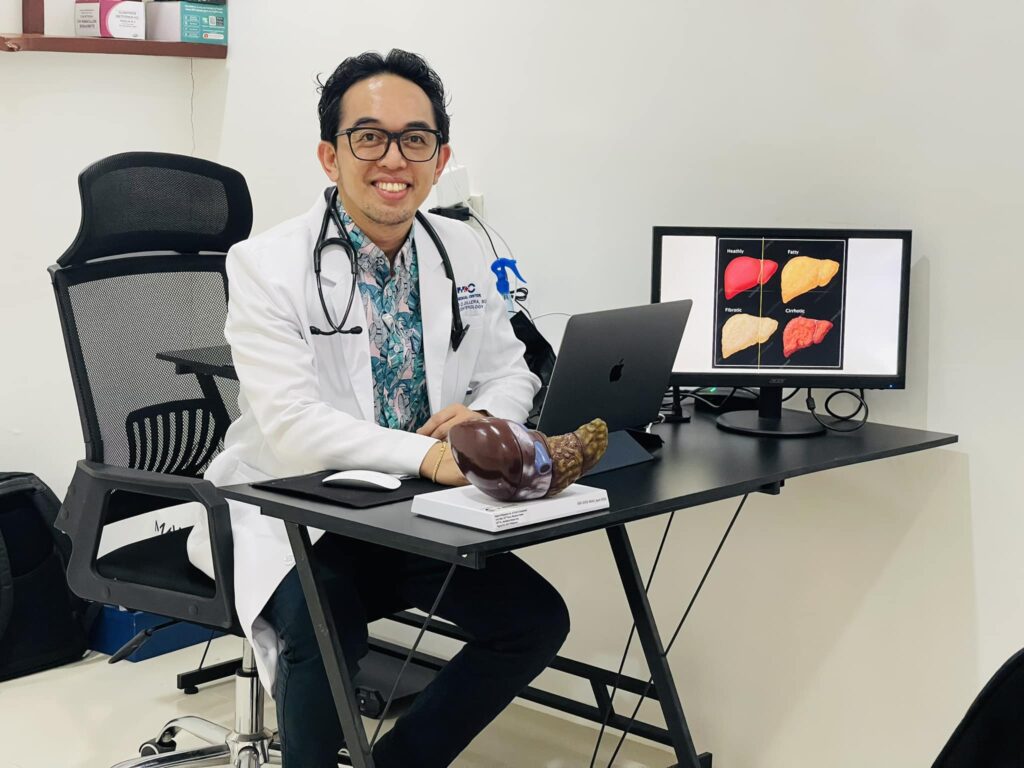By Henrylito D. Tacio
Colorectal cancer, a devastating disease, affects thousands of Filipinos each year. In fact, this malignancy of the digestive tract is the third leading cause of death, according to the Department of Health (DOH).

“Despite it being one of most treatable and preventable cancers,” said Dr. Jun R. Ruiz, a gastroenterologist at The Medical City. “Colorectal cancer screening has been shown to reduce the risk of death by around 70%.”
Colorectal cancer, however, is treatable only if discovered early. Corazon C. Aquino, the 11th president of the Philippines from 1986 to 1992, died of colon cancer because it was already too late. In December 2008, she was brought to the hospital for high blood pressure.
“Our mom wanted to know what was wrong with her,” daughter Kris Aquino told ABS-CBN Chief Correspondent Korina Sanchez. “She submitted herself to a check-up and several tests. The results showed she is suffering from colon cancer.”
In July 2009, the cancer spread to her liver. “Initially, it was in the colon, but now it has spread to her liver,” Benigno Aquino III, then a senator, was quoted as saying.
On August 1, at around 3:18 am, Aquino succumbed to her illness.
Colon and rectum
March is Colorectal Cancer Awareness Month. One cannot talk about the colon without mentioning the rectum, too. Thus, colorectal cancer (CRC) came into existence. “Almost all of these colorectal cancers start as abnormal growths in the lining of the colon and rectum called polyps,” explained Dr. Ruiz, a Philippine and American board-certified gastroenterologist.
“These polyps grow slowly and may take around 10 years for some polyps to develop into cancer,” he continued. “However, not all polyps progress to cancer. The removal of these polyps reduces the risk of developing cancer.”
Risk factors
According to Dr. Ruiz, the most common individual-specific factors that increase risk for cancer in the colon and rectum are: 1) age greater than 50; 2) personal history of colorectal cancer or advanced polyps; 3) family history of cancer in the colon and rectum and 4) certain diseases, like inflammatory bowel disease.
“There are also lifestyle habits that can be modified that likely contribute to the formation of this cancer,” said Dr. Ruiz. He listed the following: cigarette smoking, alcohol consumption, obesity, lack of exercise, and a diet that has high saturated fat, low fiber and high red meat consumption.
Early detection is the key
Although cancer in colon and rectum is exceptionally preventable, both commonly remain undetected until they reach a more advanced stage.
At the start, the polyps and early cancer may not show signs and symptoms. In the later stages of cancer, complaints like rectal bleeding, constipation, and abdominal pain may be experienced by the patient.

“Colorectal cancer can often be treated successfully when diagnosed early,” said Dr. Necy S. Juat, a medical oncologist at the National Kidney and Transplant Institute, Lung Center of the Philippines, and the Medical City. She is also a member of Cancer Care Registry Philippines Foundation, Inc.
“Early detection of colorectal cancer is crucial because it allows for more treatment options and a higher chance of a positive outcome,” she explained. “When colon cancer is detected at an early stage, it is more likely to be localized to the colon or rectum, making it easier to remove surgically.”
According to Dr. Juat, the prognosis for early-stage colon cancer, for instance, is generally favorable, with high survival rates.
“However, the specific prognosis will depend on various factors, including the stage of the cancer, the individual’s overall health, and the response to treatment,” she said. “Regular screenings are essential for early detection and prevention of colon cancer. It’s important to consult with a healthcare professional for personalized advice and guidance regarding colon cancer detection, prevention, and treatment options.”
Recent studies have shown that half of all colorectal cancer deaths could be prevented using screening, monitoring, and employing treatment methods that are already available.
Colonoscopy
In several countries, CRC screening is recommended for people starting the age of 50 years, said Dr. Ruiz. “Age 50 is the most common risk factor for this cancer, as 90% occur after the age of 50,” he pointed out. “A family history of a first-degree relative with CRC is increased two- to three-fold.”
“Screening at an earlier age, usually at 40, is advocated in first-degree relatives of patients with colorectal cancer, and in those with other additional risk factors,” Dr. Ruiz said.
In the United States, where he used to be part of the staff of the Gastroenterology Department in Kaiser Permanente-Santa Clara in California, he said that screening is recommended to average-risk patients earlier at the age of 45 “due to increasing incidence of colorectal cancer in younger individuals.”
Colonoscopy, an examination used to detect changes or abnormalities in colon and rectum, is the gold standard for CRC screening. Colonoscopy usually takes 30 to 45 minutes. However, in some instances, it may take longer, depending upon what is found and what is done during the test.

“During a colonoscopy, a flexible tube with a camera is inserted into the colon, allowing the doctor to visualize the colon,” narrates Dr. Paolo O. Dillera, a gastroenterologist at the Lanang Premiere Doctors Hospital, Inc. in Davao City. “If colon polyps are found, they are usually removed. This removal is important because it can help prevent the development of colorectal cancer.”
The removed polyps are then sent to a laboratory for further examination. “The frequency of follow-up screenings depends on the type, number and size of the polyps found, as well as individual risk factors such as family history,” he said.
Another screening method
Colonoscopy is one of the two main accepted methods of screening in average-risk individuals recommended by the various medical societies; the other is fecal immunochemical test (FIT). Colonoscopy should be done every 10 years while FIT is recommended every year.
FIT is also a good screening method. “The FIT detects only human globin (protein constituent of human red blood) and is specific for bleeding in the colon,” Dr. Ruiz explained. “Persons who have a positive FIT are 12 to 40 times more likely to have cancer than those with a negative test. The test is repeated every year if the initial test is negative. If the test is positive, a colonoscopy is needed to rule out the presence of cancer.”
As a gastroenterologist who advocates CRC screening, Dr. Ruiz recommends a screening colonoscopy in persons between 50 to 75 years of age who are healthy and in whom the risk for complications are low. “If the patient does not want to start with a colonoscopy, I suggest starting with FIT,” he said. “After a discussion with his physician, the patient can choose his preferred screening test.”
The Medical City and its doctors have been in the forefront of this cause since 2010. “This fight against the world’s second deadliest cancer is an uphill battle in the Philippines,” Dr. Ruiz claimed. “The lack of a national population-based CRC screening program and the big financial burden of CRC screening on the patient are barriers to this campaign.”
Treatments
If cancer is found, treatment starts as soon as possible. “The primary treatment for early-stage colon cancer is surgery, where the tumor and surrounding tissues are removed,” said Dr. Juat. “If the cancer has not spread beyond the colon, surgery alone may be curative. In some cases, depending on the specific characteristics of the tumor, additional treatments such as chemotherapy or radiation therapy may be recommended after surgery to reduce the risk of recurrence.”
According to Dr. Juat, the survival rates for colorectal cancer vary based on several factors. These include the stage of cancer, a person’s age and general health, and how well the treatment plan works.
Treatment costs
Dr. Juat said treatment cost depends on the stage. “If early stage, like stage 1 and 2, most of the expenses are for surgery, which ranges from P200,000 to P300,00,” she said. “For stage 3, with additional chemotherapy for six months, the cost is approximately P600,000. For stage 4, it’s P600,000 plus an additional P100,000 to P150,000 per month for targeted treatment until disease progression.”
Even if the patient has already been “cured,” there is a risk that it will return. “There is always a chance of recurrence,” she said. “The goal of chemotherapy is to lessen the chance of recurrence. Regular follow-up checkup is also important.”
For patients who survived the ordeal, Dr. Juat suggested the following lifestyle changes: good nutrition, less red meat, regular exercise, and to stop or avoid smoking and drinking alcoholic beverages. – ###








